On the Road is a weekday feature spotlighting reader photo submissions.
From the exotic to the familiar, whether you’re traveling or in your own backyard, we would love to see the world through your eyes.
Good morning! Here’s our OTR schedule.
Looks to be a fun week!
Albatrossity
The Arizona Monsoon is a welcome change in the weather, or more accurately, a shift in the wind direction. In the winter in AZ the winds are predominantly from the north and northwest (from CA, NV or UT primarily) and that air is pretty dry. Sometime in the summer the wind direction shifts so that air from the south and southwest (i.e., from the Gulf of Mexico and the Pacific Ocean), bring moist air to the mountains and deserts of the American Southwest. This predictable weather pattern means that summer moisture can make the flowers bloom, and hummingbirds have evolved to move into the state in late summer and take advantage of that abundance. And, as you will see, they move into the state from both north and south.
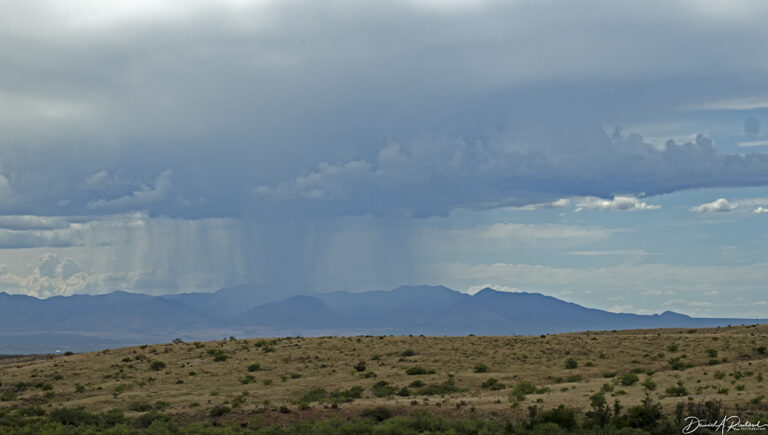
Monsoon rains in the southeastern AZ mountains come in the form of thunderstorms. Individual storms are usually short-lived and fast moving, but can bring down a lot of moisture in a short amount of time. Here’s one moving across the northern Huachuca Mountains, a bit west and north of Tombstone on the afternoon of the day that I arrived in SE AZ. Click here for larger image.
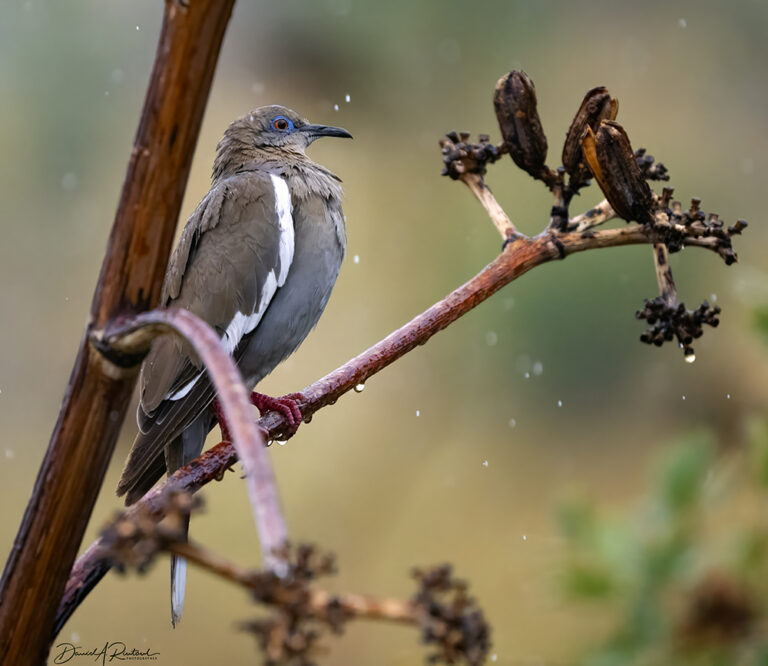
I spent three full days in the area, and it rained on me at least once every day. The cooler temperatures were welcome, but it can be daunting to photograph fast-moving birds when it is overcast and rainy. My first morning at Ash Canyon Bird Sanctuary was pretty drippy, and it lasted most of the morning. Nevertheless, the birds were there, and so was I, so we both made the most of it. Here is a White-winged Dove (Zenaida asiatica) seeking a bit of shelter under a tall flowering stalk of one of the large agave plants there. Click here for larger image.
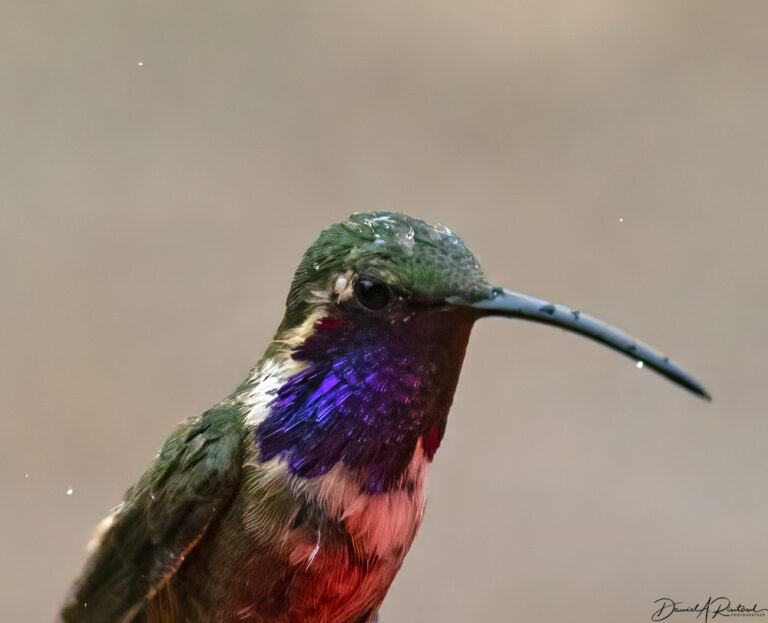
One of the special birds at Ash Canyon is the Lucifer Hummingbird (Calothorax lucifer); here is a male at the feeder during the rain. There are at least a couple of pairs of this species at the Sanctuary, but most of the range for this species is in Mexico. And the sanctuary is less than 4 miles, as the hummingbird flies, from the US/Mexico border. Click here for larger image.
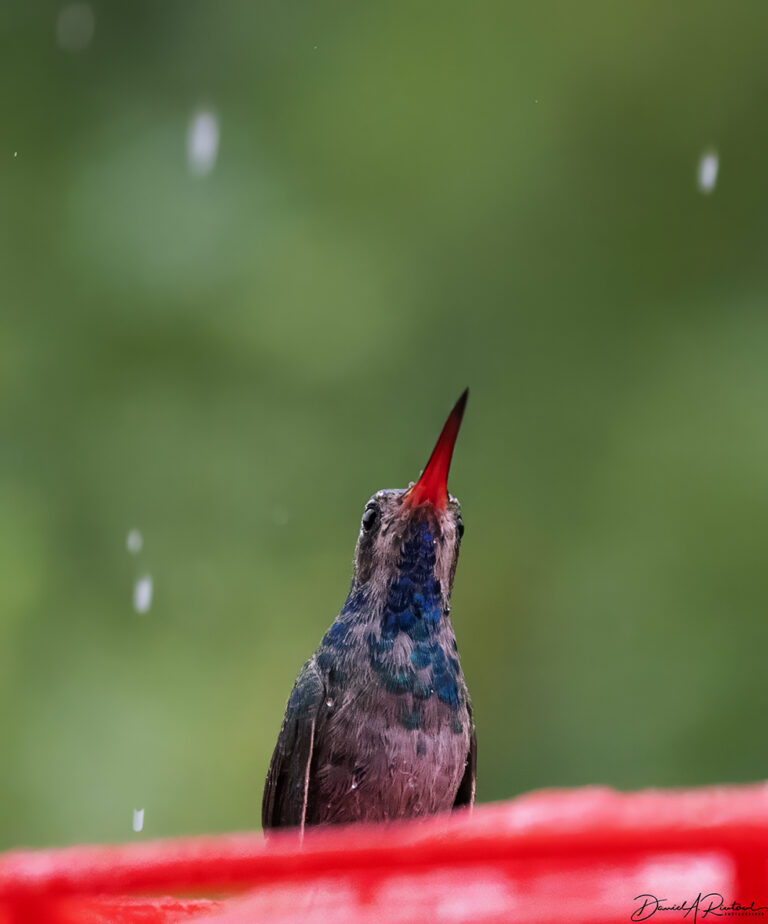
This young male Broad-billed Hummingbird (Cynanthus latirostris), looking hopeful that the rain would soon let up, reflected my own thoughts on the matter. Click here for larger image.
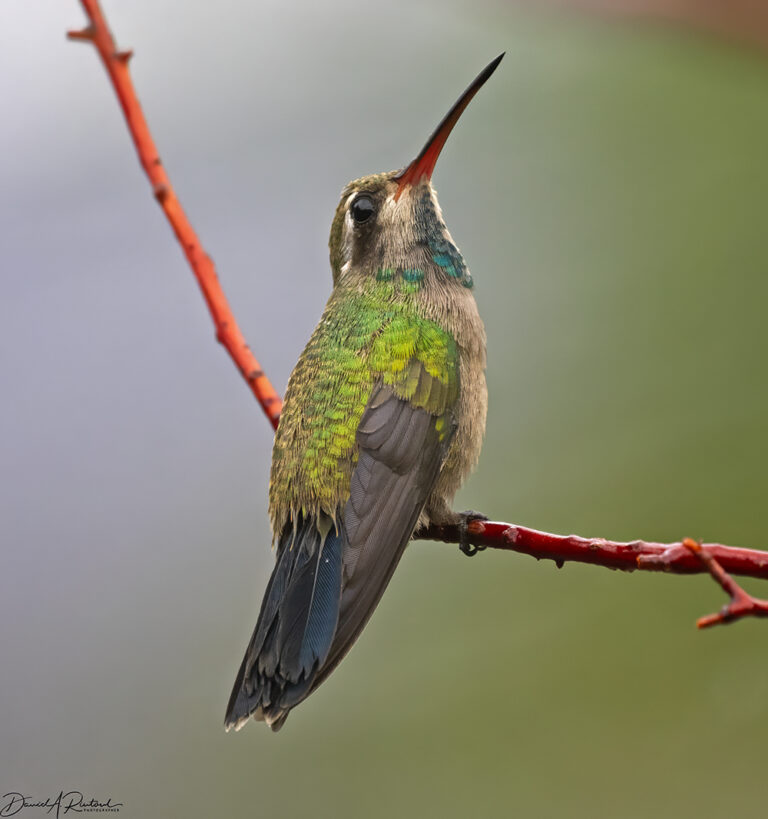
Same species, similar pose, different sex and age class. Adult female Broad-billed Hummingbird with her eyes to the skies. Click here for larger image.
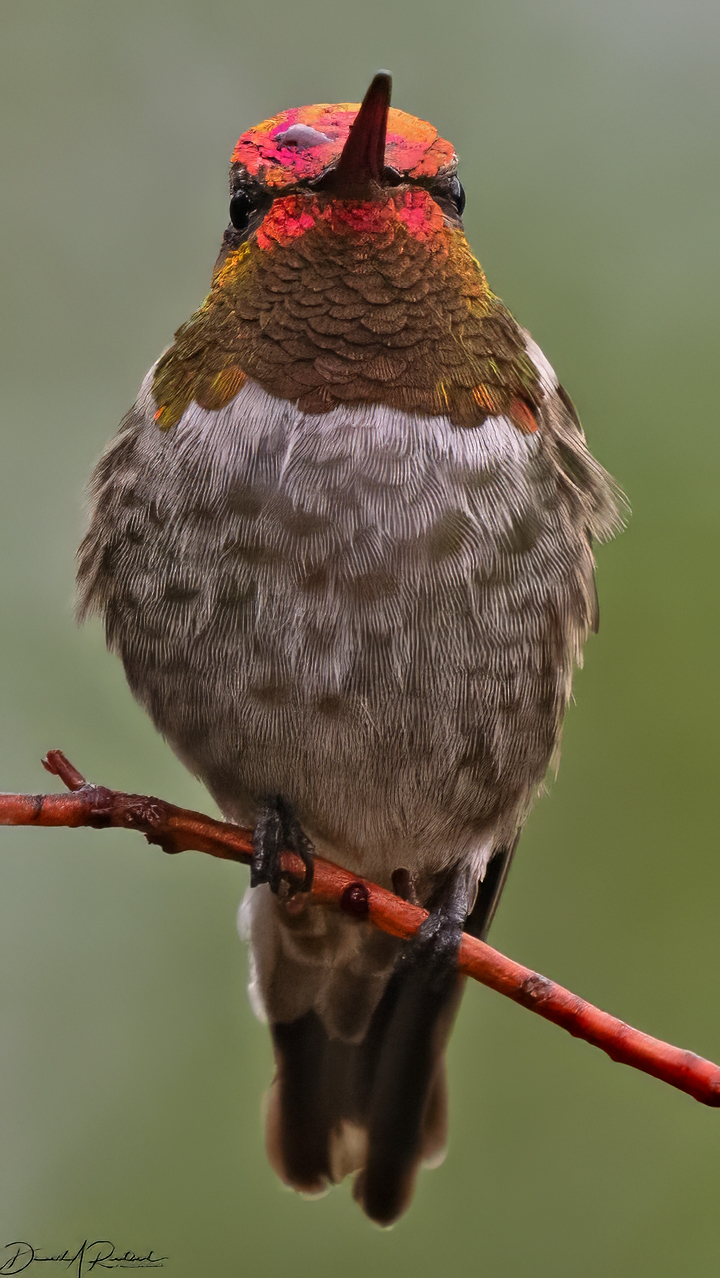
After the rain started to lighten up, this adult male Anna’s Hummingbird (Calypte anna) still had some rain on his mind. Click here for larger image.
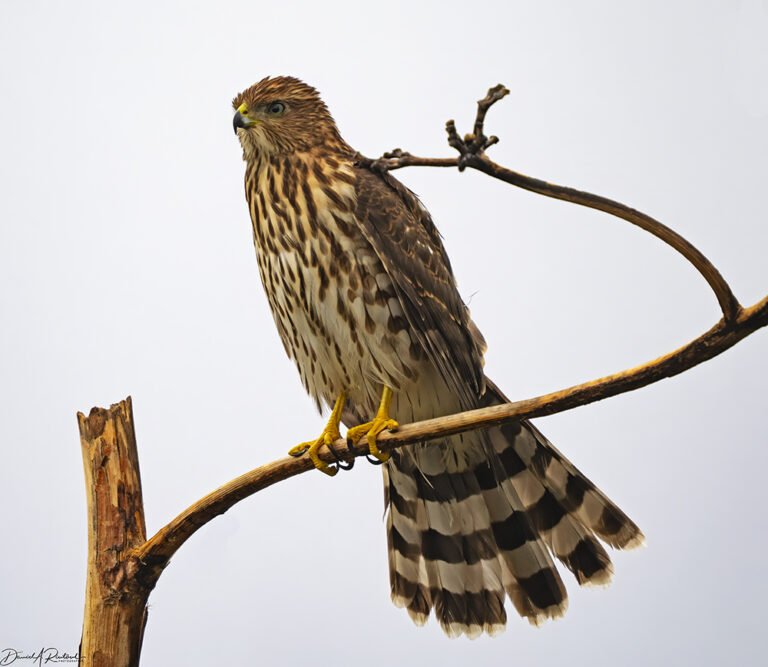
Cooper’s Hawks (Accipiter cooperi) are a common sight in the Southeastern AZ mountains. This young bird stayed on this perch, preening and cleaning its feathers after the rain, for 30-40 minutes. The doves and other birds stayed away from the feeders for a while. Click here for larger image.
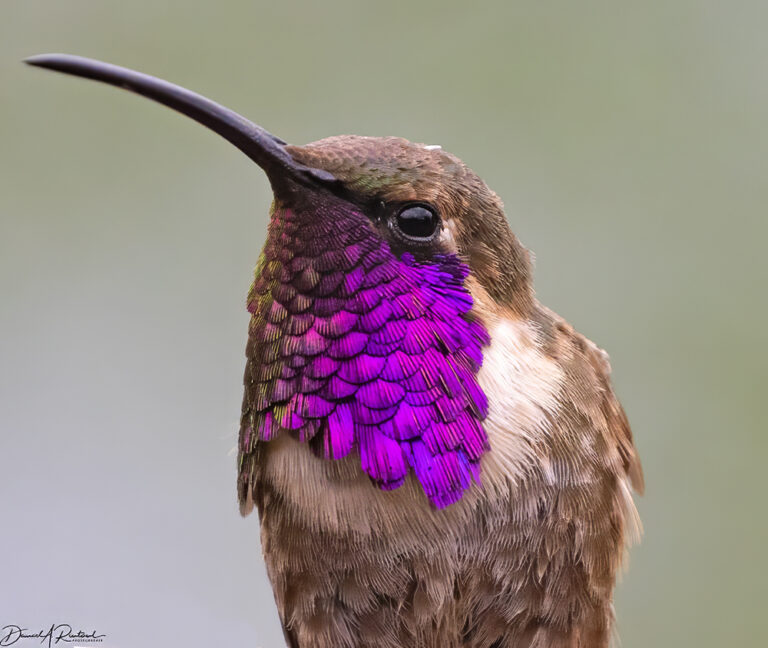
The sun had not yet come out, but the rain had ceased, allowing me to get a better shot at the fabulousness of this male Lucifer Hummingbird. Click here for larger image.
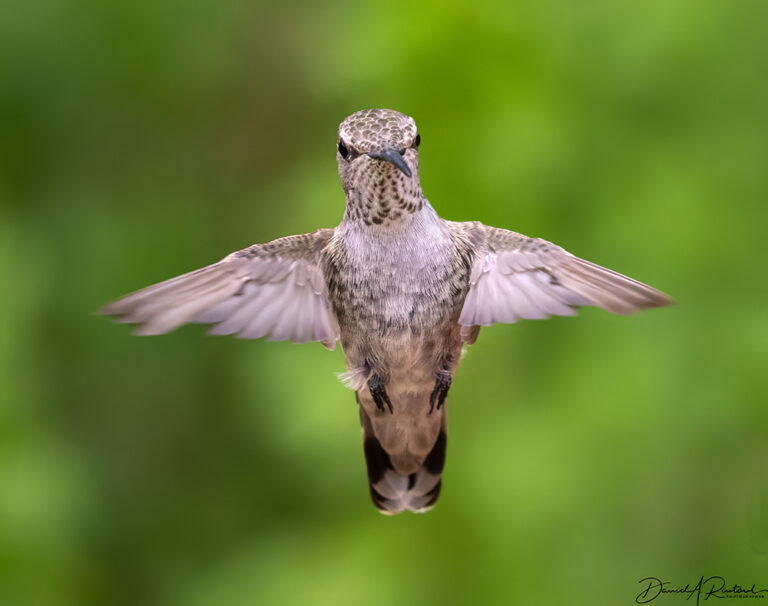
Although he was nearly small and fast enough to dodge the raindrops, this juvenile male Black-chinned Hummingbird (Archilochus alexandri) nevertheless stayed out of sight until the rain moved on. Click here for larger image.
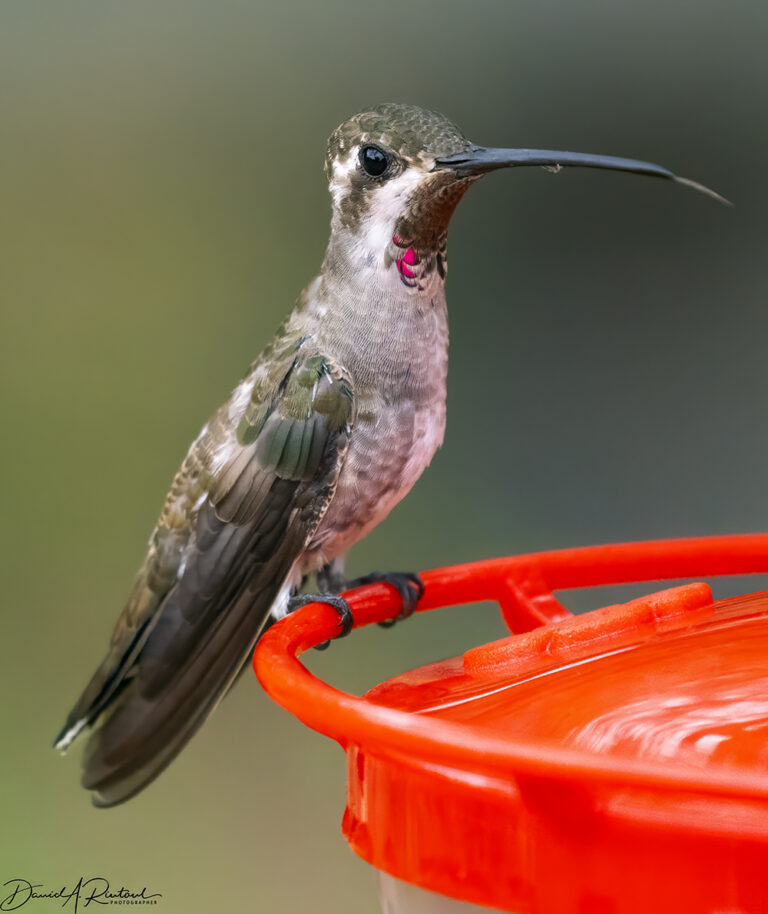
All of the hummingbirds in the pictures above are expected species for this time and place; they are either migrants from the north or local summer residents of SE AZ. But the star of the show that day (and the immediate target species for many of the other birders at Ash Canyon that week) was this young Plain-capped Starthroat (Heliomaster constantia). The breeding range for this species is entirely within Mexico and Central America, but post-breeding dispersal can sometimes bring them to this corner of the USA. This was a lifer for me, and certainly made a rainy morning that much more memorable and enjoyable! Click here for larger image.

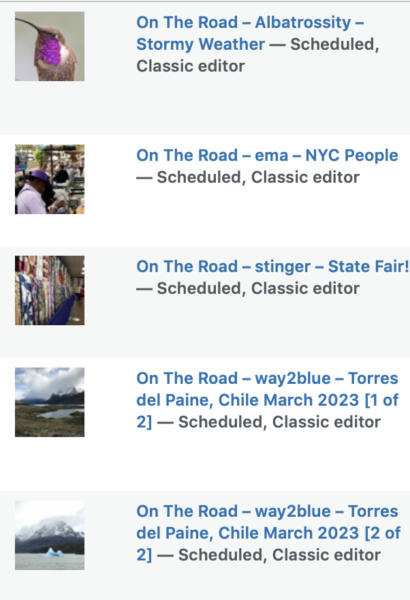
Betty Cracker
Wow, they’re all so beautiful! I love the name “Plain-Capped Starthroat!”
J R in WV
Calls forth many memories from building and visiting our small house above Gleeson at 6,000 feet out there. Now for sale, views include multiple mountain ranges across 75 miles, birds, lions, cactus from golf ball sized to tall agave blooms.
But we can’t travel back and forth any more . . .
Betty
The shot of the Anna’s hummingbird is a showstopper! Hummingbirds are endlessly fascinating.
JeanneT
Stunning textures in these hummer close-ups! It’s so cool that photography can capture the details of the feathers for us to see up close while doing the bird no harm.
Wag
I love the high grasslands of SE Arizona. My dad was raised on a ranch on the west side of the Huachuca mountains. As a kid I spent my summers on the ranch. It was a great experience. The birds and other wildlife made every day special. Thanks for bringing back memories.
mvr
The feather detail in several of these images is amazing. Still I kind of like the first Lucifer most.
I taught in Tucson for a semester a bit over 20 years ago. It is a beautiful area that one could fall in love with. Ironically though there just isn’t enough water for all the people who love it there. Apparently Tucson is losing elevation as the water gets sucked out of the ground below it. Or so I was told at the time by people who were in a position to know.
mvr
@J R in WV: That would be hard to give up.
StringOnAStick
@J R in WV: Sorry you’re having to sell; you deserve kudos for the personal grace of recognising its time to do so.
Thanks for these closeups of difficult to see hummers! I know Anna’s are common in our new home in central OR so I’ve been looking harder to distinguish them from what are the species I was used to seeing in our old home in CO.
MelissaM
I’m sure I wasn’t the only one to start singing Stevie Nicks??
I could stare at those iridescent feathers all day long. Amazing creatures.
Yutsano
@MelissaM: Stuck. In. My. Head…
Also: all the hummers are beautiful, but the young Cooper’s hawk is quite the handsome fellow.
Miss Bianca
Such breath-taking photos of my favorite birbs. Thank you!
Chat Noir
@MelissaM: That was my first thought too!
Suzanne
Those pictures of the monsoon storms are making me homesick.
Then I remember washing the dust off of my car and I’m over it.
stinger
I’m sure the rain on the plain was a bit of a pain (in Spain! in Spain!), but the tiny reflecting droplets on branch, beak, and brainpan add to the texture and complexity — and beauty — of the images. Well done!
Love the name Heliomaster!
Madeleine
These close-ups are just so splendiforous! The starthroat even has his tongue out. I like th hawk in the midst of all the extravagance of hummingbirds. Funny how small its beak looks from the angle of the shot.
cope
These are such nice pictures, thank you, the hummingbirds are just so nice to look at even when they are static.
I went to a friend’s garden party this past weekend where, among other things, I learned how to play the ancient game of Koob. Anyway, a pair of Coopers hawks nested and raised a couple of chicks in one of his pine trees and his neighbors were not happy with him “allowing” the hawks to stay. It seems one of their preferred prey targets is small birds and after the arrival and expansion of the hawk family, the number of other birds in the neighborhood dropped essentially to zero.
Albatrossity
@cope:
What did they want him to do? Harassing native birds while they are nesting is quite illegal, thankfully.
And if his neighbors appreciate birds, and bird feeding, perhaps they need to be reminded that Cooper’s Hawks ARE also birds, and they have to eat too…
Cooper’s Hawks have been around for a lot longer than bird feeders, and if they don’t want to see biology in action, they can always take down their bird feeders, just like God intended.
cope
@Albatrossity: Yes, that was his response to his neighbors, that he’s not legally allowed to do anything.
My buddy said he really enjoys the hawks and was perfectly fine with having them as local residents. He also told me the hawks don’t live in the tree any more but come around almost daily to check things out in the old neighborhood.
Kristine
I love all the hummingbirds! We have only the ruby-throateds here in northern Illinois.
Albatrossity
@cope: Yeah, I’d love to have Cooper’s Hawks nest in my neighborhood! We have a long-resident pair of Barred Owls, and more recently a pair of Red-shouldered Hawks have been nesting and raising kids somewhere in the woodlot behind the house. Since neither of those two species generally eat birds (sometimes one of the owls sits on a deck post while chickadees and other small birds come and go at the feeder just below it), they are welcomed by the neighbors as well.
I guess nobody is going to get upset if a predator eats voles and mice and lizards and snakes in their yard…
way2blue
I remain fascinated & charmed by hummingbirds’ desire to dress so flamboyantly. Mr Lucifer looks rather disgruntled though in the first photo—by the raindrops spoiling the dazzle.
Albatrossity
@way2blue: Well, when you recall that Lucifer means “light-bearer” or “light-bringer”, you can imagine how vexed he must get on cloudy days!